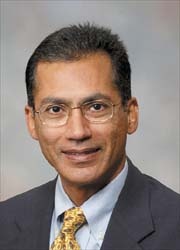Screening: Patients respond well to web-based reminders
USA - Web-based mail and phone reminder software significantly increased the percentage of patients who received preventive health services, according to a study led by Rajeev Chaudhry MBBS, at the Mayo Clinic, published in May in The Archives of Internal Medicine.

Although the US national evidence-based guidelines advise that all women over aged 40 should have an annual mammogram, Dr Chaudhry said only about 65% of women had one in the last two years. ‘The study showed we can increase that percentage through a team approach. With our new electronic tool and our related practice changes, one appointment secretary can now schedule mammography for over 10,000 women.’ The tool he refers to is the Preventive Care Reminder System (PRECARES), a web-based mail and phone reminder software designed by the Mayo team to help the Mayo secretaries arrange breast cancer screening appointments for eligible women at the practice.
Usually in the US, each woman is responsible for her own reminders to phone her physician’s office and first obtain approval for an annual mammogram. She must then wait for an appointment. If the woman overlooks this, her test could be missed.
As Dr Chaudhry points out, the reminder notice women receive via the software programme is pre-approved, so mammography can be scheduled during her first phone call. Every month, the system produces a list of women over the age of 40 who are due for mammogram screening within the next three months, but who have not scheduled a screening. Each of these patients are sent a letter asking them to phone for an appointment. If a woman does not respond, a second letter is sent, and if this produces no response, the woman is contacted by phone.
During the study, the researchers focused on 6,675 women aged 40-75. Divided into two groups, the first received the mailings and, when necessary, were phoned to remind them to book a mammogram. The control group did not receive reminders. Among the reminded group, 64.3% had their annual mammogram, compared with 55.3% in the control group. Following the study, the programme expanded and compliance with annual mammograms grew to over 72%, with 86% of the Mayo Clinic patients have had one mammogram within the past two years.
Redesigning primary care so that appointment secretaries schedule preventive services was a key to the programme’s success, Dr Chaudhry points out.
Robert Stroebel MD, chair of Primary Care Internal Medicine at Mayo Clinic, and the study’s senior author, added: ‘We already have expanded this reminder method to Pap smears and diabetes care, and will be adding other preventive services this year.’
20.06.2007











